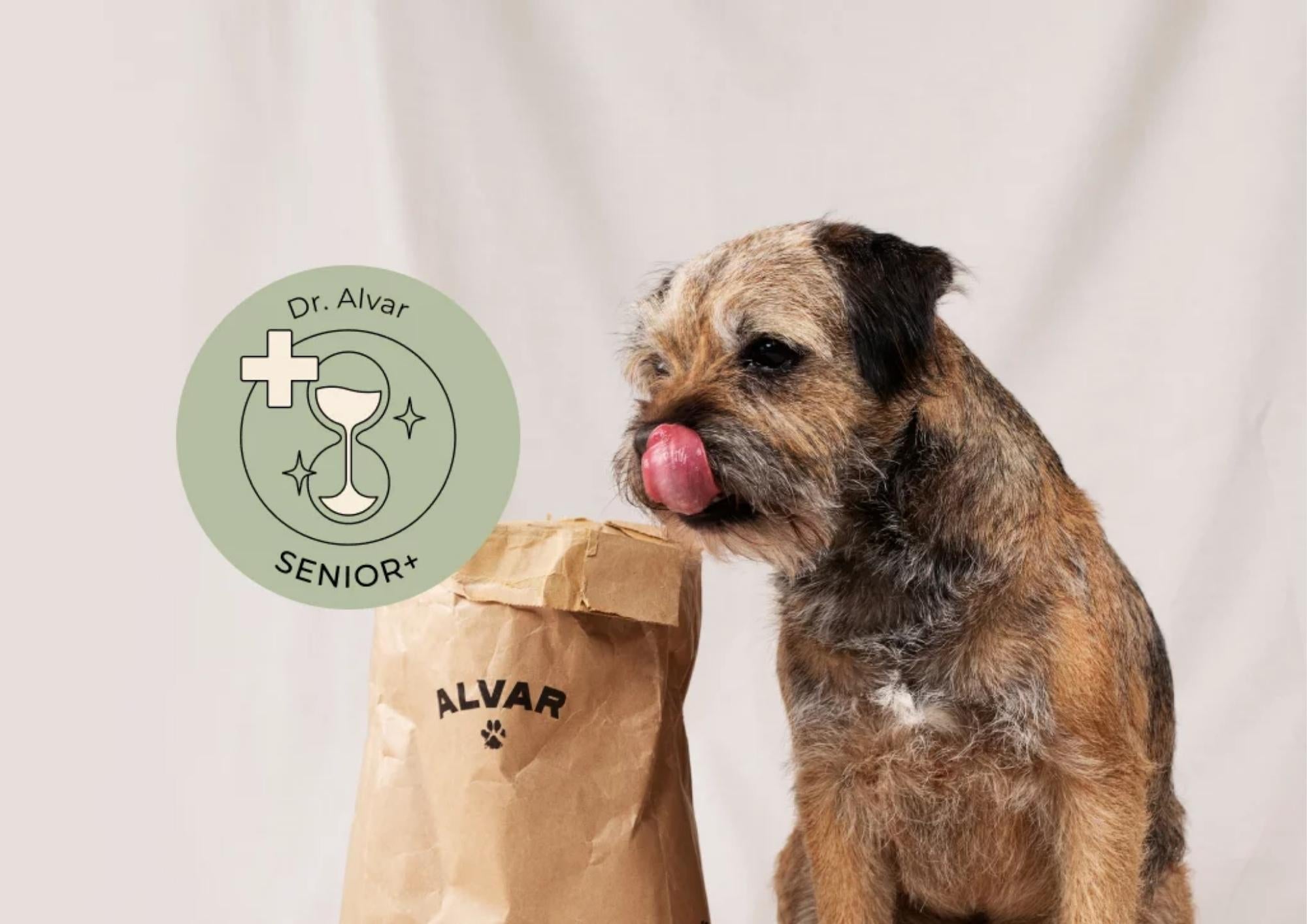How Does Aging Affect a Dog?
As a dog grows older, numerous gradual changes take place in its body, all of which are a natural part of aging:
-
Energy consumption decreases and the tendency to gain weight increases.
-
Sarcopenia, or muscle weakening, becomes more common.
-
The structure of joint cartilage weakens with age, increasing the risk of osteoarthritis.
-
Cognitive functions also change. The dog may seem a bit forgetful, its sleep-wake cycle might shift, or it may have trouble orienting to time and place.
-
The body’s natural antioxidant production becomes insufficient to counter the effects of free radicals produced by metabolism and the environment, increasing what’s known as oxidative stress. Oxidative stress damages various cell structures and is linked to many chronic illnesses and aging in general.
Not all signs of aging are negative – for example, a maturing personality and calming down from youthful hyperactivity can definitely be considered good things. 😍

Winnie the Rhodesian Ridgeback is 7 years old – a great age to switch to senior food.
Can Diet Help Slow Down the Aging Process in Dogs?
In other words: can nutrition add more healthy years to a dog’s life?
The right, needs-based nutrition can support a dog’s health throughout its entire life – especially in their senior years.
That’s why we developed the Dr. Alvar Senior+ recipes. These are specially formulated to meet the unique needs of older dogs, helping to maintain their well-being. Here’s how it works in practice:
Energy Use & Weight Gain
Our complete foods containing the Senior+ blend have moderate calorie and fat content, helping reduce energy intake without significantly lowering portion size.
A higher fiber content also helps keep the dog feeling full, despite the reduced energy intake.
Muscle Weakening (Sarcopenia)
Senior+ recipes are rich in high-quality, easily digestible protein from chicken or fish (depending on the recipe). Adequate protein intake helps support muscle mass in aging dogs.
L-carnitine, added to the recipes, promotes fat metabolism and helps preserve lean muscle mass.
Stiffening Joints
To support aging joints, the Senior+ recipes contain natural “building blocks” of cartilage: glucosamine and chondroitin sulfate, which help maintain normal joint function and joint fluid production.
Fish oil added to the food provides senior dogs with beneficial omega-3 fatty acids, whose anti-inflammatory properties also support joint health.
Cognitive Functions
Omega-3 fatty acids are also important for brain and nervous system function. They help maintain normal cognitive abilities, such as memory and attentiveness, in aging dogs. Antioxidants in the recipes also contribute to this.
Oxidative Stress
The Senior+ blend includes antioxidants that support the body’s natural defense systems and act like “rust protection.” These include vitamins C and E from berries, as well as taurine.
 Lulu, a mixed-breed dog, has reached the honorable age of 12.
Lulu, a mixed-breed dog, has reached the honorable age of 12.
Which Alvar Pet Foods Are Suitable for Senior Dogs – and When Should You Make the Switch?
The Dr. Alvar Senior+ blend is included in two of our dry food recipes:
Alvar Pet Senior/Chicken dry food
- Low-fat formula for senior dogs
- Mono-protein chicken featuring fresh chicken
- Fibre-rich for enhanced satiety
- Joint and mobility support with glucosamine and chondroitin
- Produced in Finland, developed by veterinarians
Alvar Pet Light/Fish dry food
- Low-fat formula for weight management
- Mono-protein fish featuring fresh fish, grain-free
- Fibre-rich for enhanced satiety
- Joint and mobility support with glucosamine and chondroitin
- Locally produced (Denmark), developed by veterinarians
Aging depends on factors like the dog’s size, but also on individual characteristics. On average, switching to senior food is recommended around 7–8 years of age. You can read more about the nutritional needs of older dogs in our article here.
It’s worth noting that many signs of aging aren’t visible – so there’s no need to wait until you see the first wrinkles around their eyes. ☺️ 🐾




